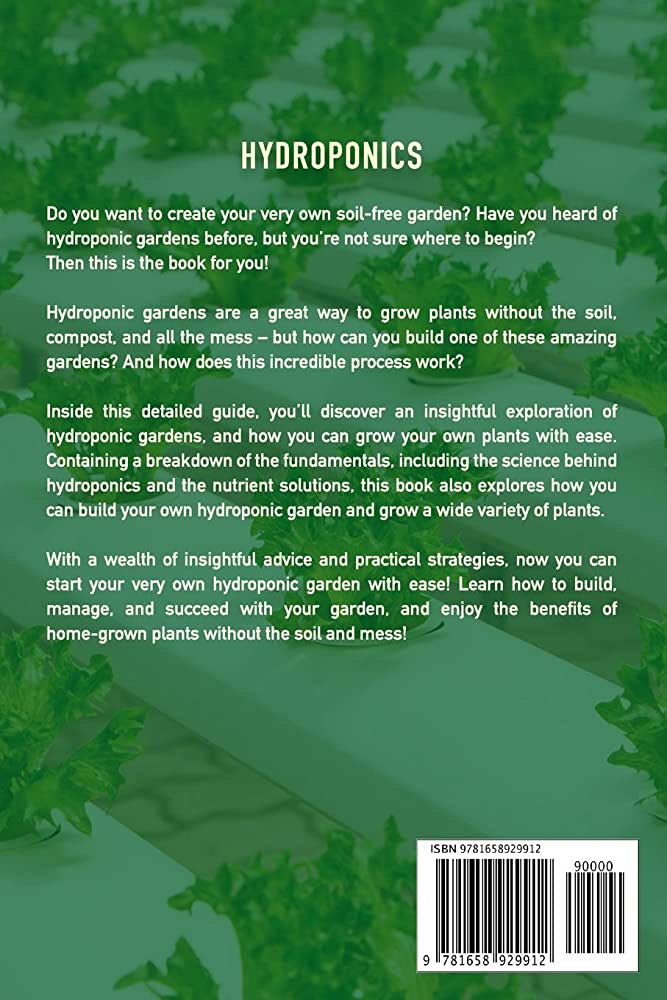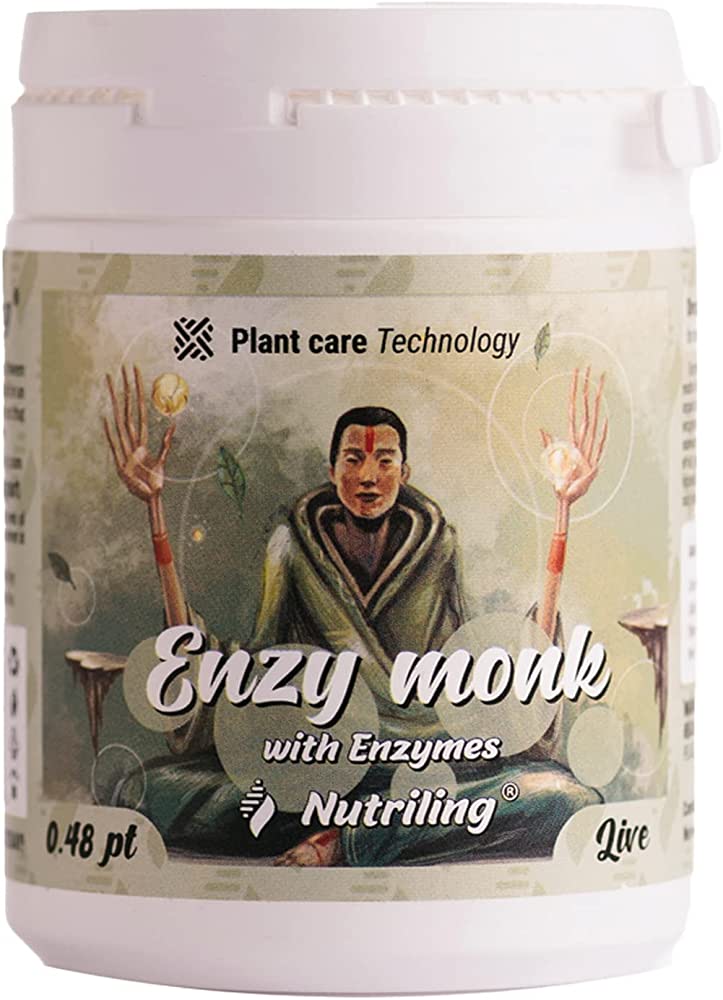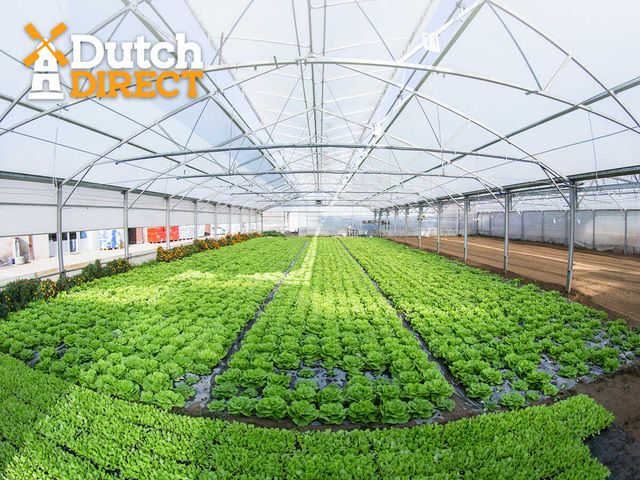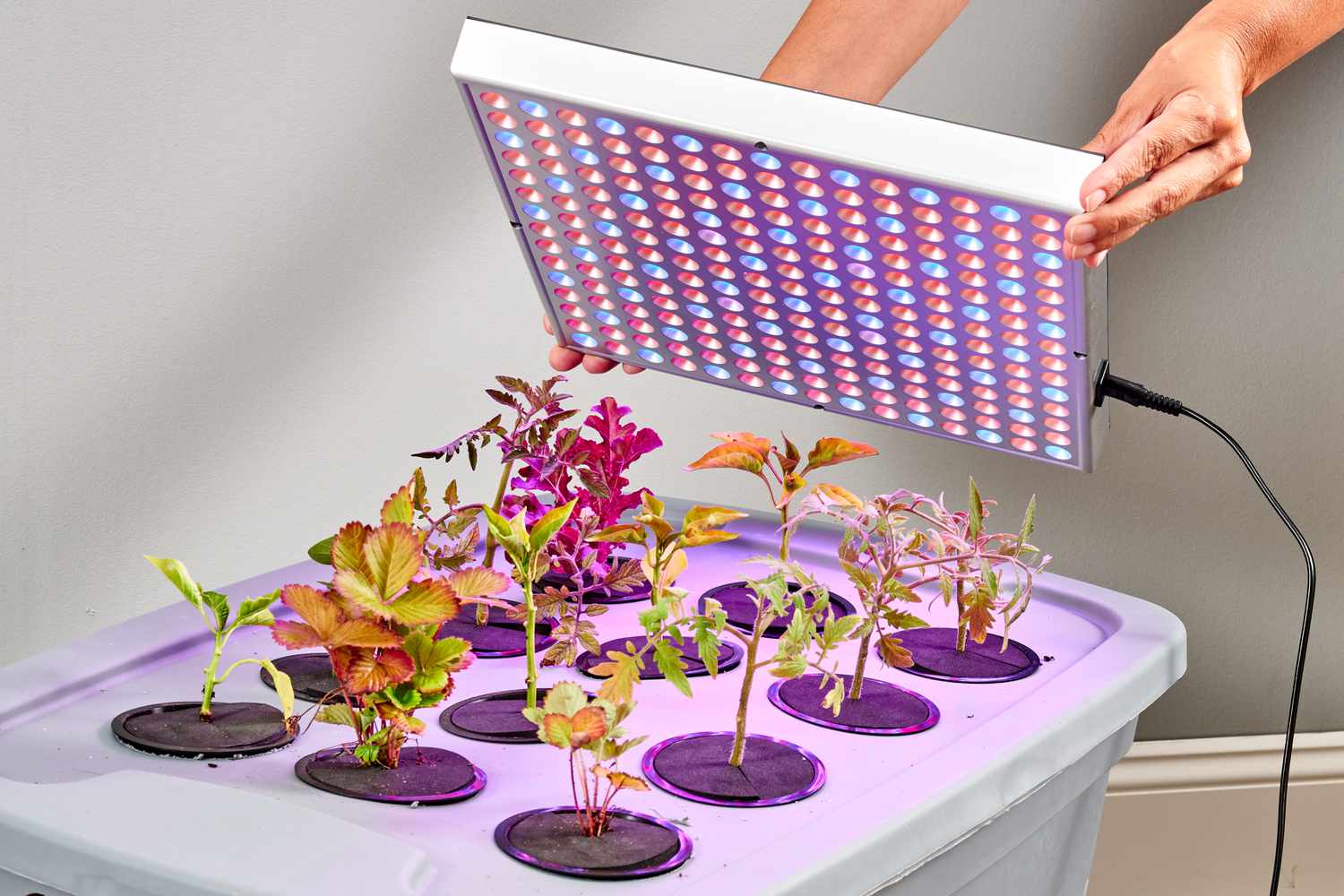Choosing the right light spectrum for hydroponic plants is crucial for their growth and development. The spectrum of light can affect various aspects of plant growth, including yield, quality, and overall health.
Hydroponics is a popular cultivation method that uses a soilless medium to grow plants. Instead, plants are grown in a nutrient-rich water solution with the help of artificial light. However, choosing the right light spectrum is crucial to ensure the optimal growth and development of plants.
Light spectrum refers to the different wavelengths found in the visible light range, including blue, green, red, and far-red light. Each spectrum has a different effect on plant growth, and it’s essential to choose the right combination of light for your hydroponic setup. In this article, we’ll discuss the different types of light spectra and their effects on hydroponic plants.

Credit: www.amazon.com
Why Is Light Spectrum Important In Hydroponics?
Maximizing Your Hydroponic Plants With The Best Light Spectrum
Hydroponics is a method of growing plants without soil by supplying nutrients through a water-based system. In hydroponics, light plays a crucial role in providing the energy necessary for the plants to grow. However, not all light is created equal.
The light spectrum, or the range of colors that the light produces, is vital to ensure the plant’s growth and development.
Highlight The Role Of Light In Photosynthesis.
Photosynthesis is the process by which plants convert light energy into food for growth and development. Light acts as a source of energy for the plants to carry out photosynthesis. Without light, the plants cannot produce food, and their growth is stunted.
Light is also responsible for regulating the plant’s growth and development by activating different plant hormones.
Explain How Plants Respond To Different Colors Of Light.
Different colors of the light spectrum have varying effects on plant growth and development. During photosynthesis, plants absorb red and blue light the most. Red light stimulates stem growth and flowering, while blue light promotes leaf growth and plant development.
In contrast, green light is mostly reflected by the plant, and it does not contribute to photosynthesis. Plants that receive inadequate light suffer from stunted growth, yellowing of leaves, and low yields.
To maximize plant growth and development in hydroponics, it is crucial to provide the correct light spectrum by choosing the right light source. Led grow lights are a popular option because they can emit specific wavelengths of light that cater to the plant’s needs.
Understanding the importance of light spectrum in hydroponics is essential to maximize your hydroponic plants’ growth. Carefully selecting your light source to cater to the specific needs of your plant can lead to higher yields, healthier plants, and more robust crops.
Essential Factors To Consider For Choosing The Right Light Spectrum
Choosing The Right Light Spectrum For Hydroponic Plants
Hydroponic gardening is becoming increasingly popular among enthusiasts who want to grow fresh and healthy produce in the comfort of their homes. One of the most important aspects of this method of gardening is providing adequate light to the plants.
Discuss Different Types Of Plants And Their Specific Light Requirements
Different types of plants require different spectrums of light to grow. Here are a few examples:
- Vegetables such as tomatoes, peppers, and cucumbers require more red and blue light.
- Leafy greens and herbs grow well under blue light.
- Flowering plants like roses and daisies require more red light.
- Root vegetables such as carrots and onions do well under a combination of red and blue light.
Mention The Importance Of The Growth Stage Of The Plants And How It Affects The Light Spectrum Requirements
The growth stage of the plants has a significant impact on the light spectrum requirements. To ensure optimum growth and yield, it is necessary to adjust the light spectrum based on the plant’s growth stage. Here are a few examples:
- During the vegetative stage, plants require more blue light.
- During the flowering stage, plants require more red and far-red light.
- During the fruiting stage, plants require more red and blue light.
Highlight The Impact Of The Wattage And The Intensity Of The Light On Plant Growth
Apart from the light spectrum, wattage and intensity also play a crucial role in plant growth. In simple terms, wattage refers to the power of the light fixture, while intensity refers to the amount of light that reaches the plants.
Here are a few things to keep in mind:
- Higher wattage does not always translate into better growth.
- The intensity of the light should be adjusted based on the plant’s needs.
- Overexposure to high-intensity light can cause sunburn and other damages to the plants.
Choosing the right light spectrum for hydroponic plants is crucial to ensure healthy and abundant growth. By considering the plant’s specific light requirements, growth stage, and wattage, you can design a lighting system that provides optimal conditions for your homegrown produce.
Best Light Spectrum For Hydroponic Plants
Discuss The Different Parts Of The Light Spectrum And Their Impact On Plant Growth.
When it comes to hydroponic gardening, the right light spectrum is crucial for successful plant growth. Each color in the light spectrum has a unique impact on plant growth, affecting factors such as photosynthesis, stem length, and flowering. Here are the different parts of the light spectrum and their impact on plant growth:
- Blue light: Blue light helps plants produce chlorophyll, which is essential for photosynthesis and healthy growth. It also promotes strong stems and leaves.
- Red light: Red light is important for flowering and fruiting, making it a critical part of the light spectrum for plants in the blooming phase.
- Green light: Green light is not as important for plant growth, as plants reflect it more than they absorb it. However, it can help penetrate plant canopies and promote deeper growth.
- Ultraviolet light (uv): Uv light can be harmful to plants and humans in large doses, but small amounts can help plants produce more essential oils and encourage stronger growth.
Explain The Differences Between Full Spectrum, Broad Spectrum, And Narrow Spectrum Lights.
Different types of lights emit different parts of the light spectrum. Here’s what you need to know about three common types of lights used in hydroponic gardening:
- Full spectrum lights: Full spectrum lights replicate natural sunlight and emit all colors in the light spectrum. This can be beneficial for plants in all stages of growth.
- Broad spectrum lights: Broad spectrum lights emit a range of colors, but not as much as full spectrum lights. They are ideal for plants in the vegetative stage.
- Narrow spectrum lights: Narrow spectrum lights emit only a specific range of colors in the spectrum, such as only blue or red. These can be ideal for plants in specific stages of growth or for supplemental lighting.
Highlight The Advantages And Disadvantages Of Using Different Types Of Light Bulbs, Such As Led, Hid And Fluorescent.
There are several types of light bulbs to choose from when it comes to hydroponic gardening. Each type has its advantages and disadvantages:
- Led lights: Led lights are energy-efficient and long-lasting. They emit less heat than other types of lights, making them a good choice for small spaces. However, they can be more expensive upfront.
- Hid lights: Hid lights are powerful and efficient, making them ideal for large grows. They are also less expensive than led lights. However, they emit more heat, so proper ventilation is required.
- Fluorescent lights: Fluorescent lights are affordable and energy-efficient. They are a good choice for small grows or for supplementing other lights. However, they are not as powerful as hid or led lights and can produce less yield.
When choosing the right light for your hydroponic garden, consider your budget, space, and specific plant needs. A combination of different types of lights may also be necessary for optimal growth.
Maximizing The Benefits Of Light Spectrums In Hydroponic Gardening
When it comes to hydroponic gardening, choosing the right light spectrum is essential to maximize the benefits of your plants’ growth. The proper light quality, intensity, and duration are crucial for plants to photosynthesize efficiently and produce the highest quality of crops.
Here are some tips on how to monitor and adjust light spectrum in hydroponic systems to achieve maximum yields and quality of produce.
Discuss How To Monitor And Adjust Light Spectrum In Hydroponic Systems
Monitoring the light spectrum in hydroponic systems is crucial to ensure that plants get the right amount of light they need. Here are some tips on how to monitor and adjust the light spectrum in hydroponic systems:
- Use a light meter to measure the intensity of light in your hydroponic system. This will help you to keep your light levels consistent
- Adjust the spectrum using leds; you can adjust the intensity of different colored leds to create a custom light spectrum for your plants
- Check your grow light manual for information on what light spectrum you should be using. Newer led grow lights even have customizable settings and apps available that can help you monitor and adjust the light spectrum from your smartphone
Highlight The Importance Of The Duration And Timing Of Light Exposure
Duration and timing of light exposure are equally important for the success of your hydroponic garden. Here’s why:
- Plants require darkness to grow successfully, so ensure that your plants get 6-8 hours of dark each day, especially during the flowering phase
- Ensure that your plants get enough light during their vegetative and flowering stages by setting your grow light timer. For most plants, 12-16 hours of light will be sufficient for vegetative growth, while 8-12 hours are ideal for the flowering stage
- Keep a consistent light schedule; sudden changes in light intensity or duration can shock your plants, affecting their growth and productivity
Provide Tips For Achieving Maximum Yields And Quality Of Produce
Here are some tips to achieve maximum yields and quality of produce in your hydroponic garden:
- Use the optimal light spectrum and set your grow light timer to ensure that your plants get enough light during their growth stages
- Place your grow lights at the appropriate distance away from your plants to prevent them from overheating, stunting their growth, or even burning their leaves
- Regularly rotate your plants to ensure that they receive consistent light on all sides
- Ensure that your hydroponic system has sufficient ventilation to regulate the temperature and humidity in the growing area
- Always monitor and adjust your light spectrum, intensity, duration, and timing to ensure that your plants receive optimal growing conditions for maximum yields and the highest quality of produce.
By following these tips, you’ll have a hydroponic garden that produces healthy, high-quality, and bountiful crops that you can enjoy all year round.
Frequently Asked Questions For Choosing The Right Light Spectrum For Hydroponic Plants
What Light Spectrum Do Plants Need?
Plants need a full spectrum of light, including blue and red wavelengths.
What Are The Benefits Of Blue Light For Plants?
Blue light promotes leaf growth, stem growth, and enhances overall plant health.
What Are The Benefits Of Red Light For Plants?
Red light is essential for flowering and fruiting plants and helps regulate plant growth.
Can Plants Grow With Only Blue Or Only Red Light?
Plants can grow with only blue or only red light, but their growth may be stunted or deformed.
How Does Light Spectrum Affect Plant Flavor?
Light spectrum can affect plant flavor, with blue light increasing flavor compounds and red light increasing sweetness.
How Do I Choose The Best Light Spectrum For My Hydroponic Plants?
Choose a light spectrum that is appropriate for the growth stage of your plants. Blue light for vegetative growth, red light for flowering and fruiting.
Conclusion
As we conclude this discussion, it’s evident that choosing the right light spectrum for your hydroponic plants is a critical element to consider. By understanding the different light spectrums, their effects on plant growth and development, and the various plant needs, you can select the best lighting system for your hydroponic garden.
It’s important to emphasize that different plants have unique light requirements, and as such, you should choose the light spectrum that best suits your plants. Remember to consider factors like the stage of plant growth, the light intensity and duration, and the specific plant species when selecting your lighting system.
In addition, ensure that you invest in high-quality lighting system to maximize plant growth and yield. With this information, you’re better placed to make an informed decision and set your hydroponic garden on a path to success.




